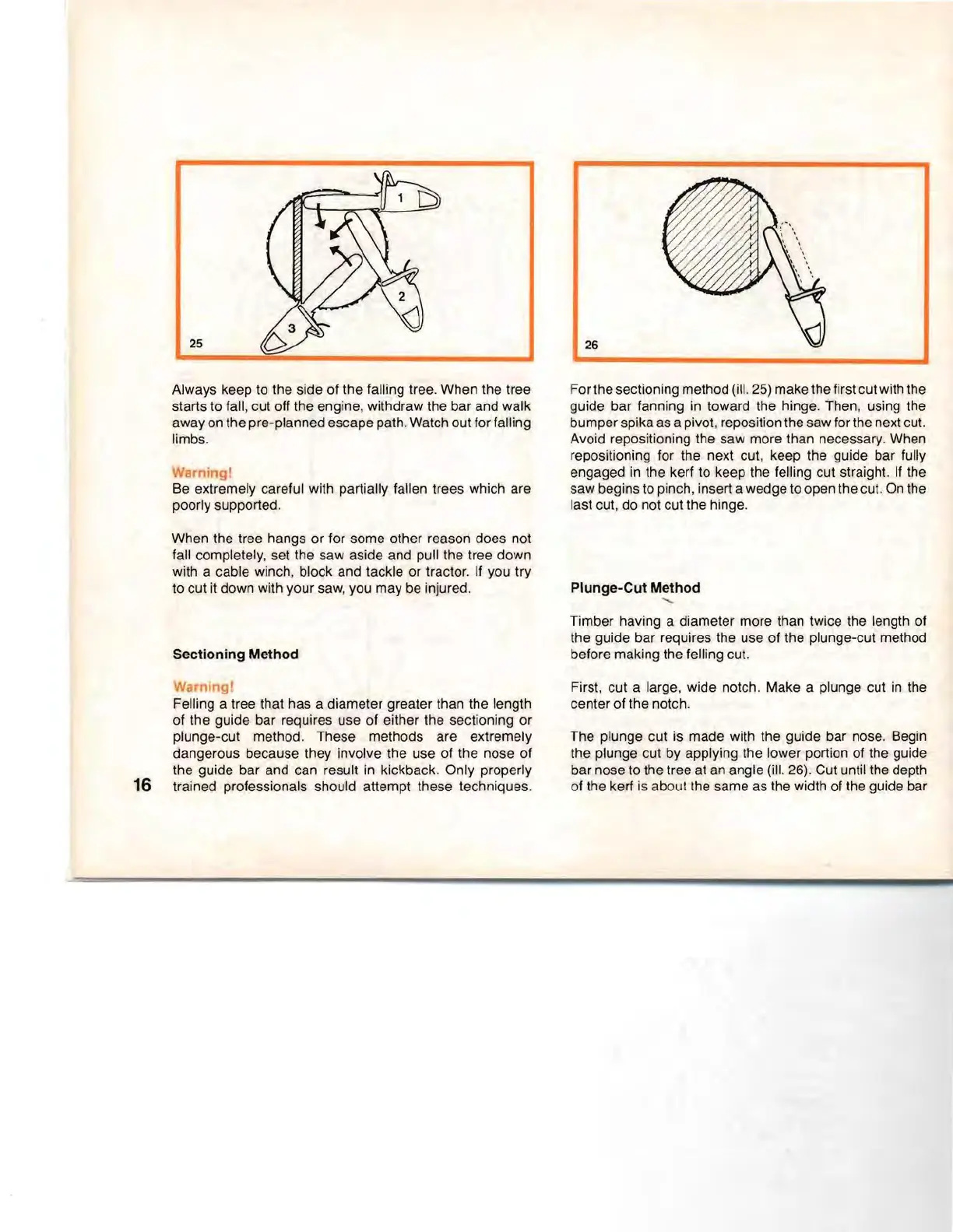25
26
Always keep to the side of the falling tree. When the tree
starts to fall, cut off the engine, withdraw the bar and walk
away
on
the pre-planned escape path. Watch out for falling
limbs.
arningl
Be
extremely careful with partially fallen trees which are
poorly supported.
When the tree hangs or for some other reason does not
fall completely, set the saw aside and pull the tree down
with a cable winch, block and tackle or tractor.
If
you try
to cut
it
down with your saw, you may be injured.
Sectioning
Method
Warning!
Felling a tree that has a diameter greater than the length
of the guide bar requires use of either the sectioning or
plunge-cut method. These methods are extremely
dangerous because they involve the use of the nose of
the guide bar and can result
in
kickback. Only properly
16
trained professionals should attempt these techniques.
For the sectioning method (ill.
25)
make the first cut with the
guide bar fanning
in
toward the hinge. Then, using the
bumper spika as a pivot, reposition the saw for the next cut.
Avoid repositioning the saw more than necessary. When
repositioning for the next cut, keep the guide bar fully
engaged
in
the kerf to keep the felling cut straight.
If
the
saw begins to pinch, insert a wedge to open the cut.
On
the
last cut, do not cut the hinge.
Plunge-Cut
Method
Timber having a diameter more than twice the length of
the guide bar requires the use of the plunge-cut method
before making the felling cut.
First, cut a large, wide notch. Make a plunge cut
in
the
center of the notch.
The plunge cut is made with the guide bar nose. Begin
the plunge cut
by
applying the lower portion of the guide
bar nose to the tree at
an
angle
(~II.
26). Cut until the depth
of the kerf
is
about
the
same as the width of the
gUide
bar
